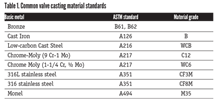MSS Publishes Revised and New Industry Standards
The Manufacturers Standardization Society (MSS) of the Valve and Fittings Industry is excited to announce publication of the new Standard Practice SP-158-2021, Supplemental High-Pressure Gas Test Procedures for Valves.
#standards #pressure-relief
The new Standard Practice, MSS SP-158-2021, is now available from authorized U.S. and global distributors. It has been published in an electronic version (PDF) and in book format.
Also, SP-92-2021, Valve User Guide, has been revised and published by MSS.
Standard Practice (SP)-92 has served the industry for over 41 years; providing a standardized informational guide to assist industrial valve users engaged in a variety of applications and in various operating environments. The information is divided into five main sections: “References”, “Selection”, “Shipping and Storage”, “Installation”, and “Operation and Maintenance”. SP-92 continues to be maintained under the consensus of MSS Technical Committee 306, Valve Operation.
The revised Standard Practice, MSS SP-92-2021, is now available from authorized U.S. and global distributors. It has been published in an electronic version (PDF) and in book format.
RELATED CONTENT
-
New API Standard for Globe Valves
While the American Petroleum Institute (API) and other organizations published a variety of valve standards covering gate, ball, check, butterfly and plug valves for decades, the first for globe valves came out in 2013.
-
WCC and LCC Casting in ASME B16.34
Q: Why do WCC and LCC castings have different maximum allowable temperatures in ASME B16.34?
-
New Requirements for Actuator Sizing
After decades of confusion, the American Water Works Association has created new standards for actuator sizing that clear up some of the confusion and also provide guidance on where safety factors need to be applied.







 Unloading large gate valve.jpg;maxWidth=214)


